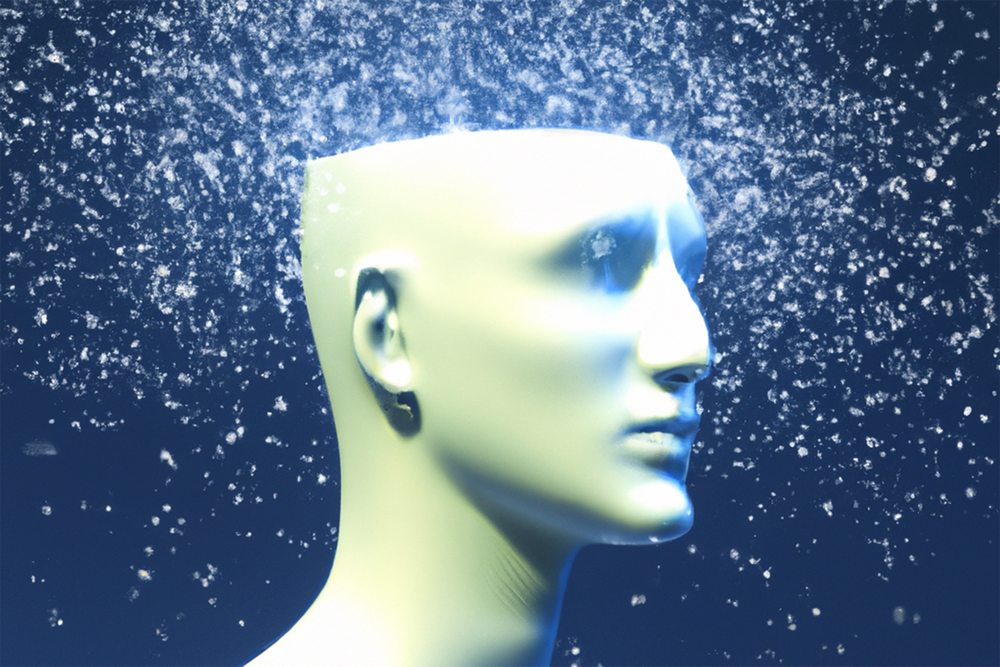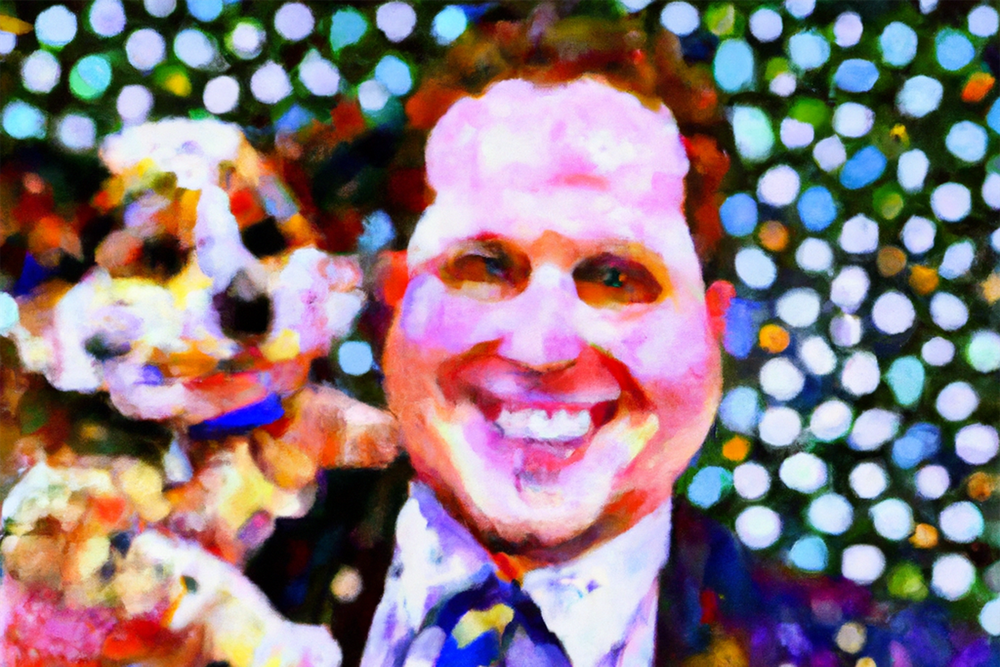AI in B2B content marketing: What are the risks?
While artificial intelligence opens up a lot of opportunities in B2B content creation, it’s important to know the risks concerning the law, copy generation, and image creation.

Artificial intelligence is evil. It threatens to take over our to-do lists, terraform our written work, march single-mindedly towards the eradication of all menial tasks… actually, that doesn’t sound so bad.
While AI-powered tools have plenty of potential to help B2B marketers work smarter, they come with caveats and risks. Destroying humanity is not necessarily one of them.
The latest chatter around AI paints a complex picture: we’re still figuring out how to use it safely, how it benefits our businesses, and how well it can do things like write news articles. Even as some are working to merge AI with human brain cells to make superior machines, others still haven’t even agreed on the definition of artificial intelligence.
Today, we’re going to cut through the noise and focus on spotting the dangers of AI in B2B marketing.
Before we get started, a pro tip: Anything you read about AI, including this blog, could be obsolete in the coming months or years. Make sure you check the dates and always read the latest.
The legal risks of AI
AI chatbots are trained on massive amounts of publicly available data on the internet. It’s impossible to go through every single source and vet them before training, especially as the models are constantly fed new data sets.
 His mind is blown by the fact that we generated this in DALL-E with the prompt: "An AI hallucinating."
His mind is blown by the fact that we generated this in DALL-E with the prompt: "An AI hallucinating."
AI won’t keep your secrets. Always be aware that when you use an AI tool, it can retain any information you input. This information can also be collected and used for future training data.
AI can hallucinate. There’s a tendency for AI to confidently make factual statements that are inaccurate, misleading, or false. You can ask chatbots to cite sources, but they don’t always do so reliably.
The law around AI is still developing. As legal battles around AI continue to unfold, it’s possible for AI to infringe copyright by accessing a copyright owner’s work and generating a substantially similar output.
AI may not have the latest information. For example, the free version of ChatGPT is trained on archived data from 2021 and earlier, meaning it is often behind the curve on current events. Depending on the model you use, AI may not be up to snuff on the latest marketing trends.
The takeaways
Be careful with the information you share with an AI program (and the output you get in return). Don’t input private or sensitive data, including your customers’ information or anything confidential, and take extra care when asking it to mimic copyrighted works.
Remember that AI tools are constantly receiving new data from users interacting with them. Although the platforms don’t necessarily have a way to verify the intel they receive, they can regurgitate that new input as if it’s concrete information. Fact-check everything AI provides with specific sources.
The risks of AI in copywriting
Because AI is trained on a wide swath of available information, some might argue that it can’t create any truly original ideas. It’s also susceptible to the errors and shortcomings of its sources.
 Just to keep you on your toes, this is a photo of real people sourced from iStock.
Just to keep you on your toes, this is a photo of real people sourced from iStock.
AI is biased. Unfortunately, the internet has its fair share of biased and discriminatory content, which AI is bound to pick up on. Even trained AI platforms can discriminate based on factors such as gender, race, or sexual orientation.
AI lacks empathy. AIs are machines. Though it draws from human sources, AI isn’t able to provide empathy or a human element to your writing. The same is true for creativity and humour.
AI can’t talk like you. Because AI chatbots mainly reorganize or reinterpret information, they can sometimes adjust the tone of a piece, but they can’t reliably adapt text to match the voice of your brand.
AI is trained to paint with a broad brush. Particularly in the niche world of B2B, AI lacks a deep understanding of your customers. Its background of scraped internet content means it lacks the specific buying language and subject matter expertise that only experienced B2B writers have.
The takeaways
As a B2B marketer, you know your product, your customers, and your brand. AI doesn’t. It’s up to you to understand what your audience really wants to see in a piece of written content and deliver it in a way that resonates with them.
If you generate ideas, outlines, or text using an AI tool, you should always modify and edit it thoroughly to make sure it matches your brand voice and sends a message your customers care about. Accurate, human-led B2B content will always build more trust with fellow humans.
The risks of AI image generation
Image-generating AI platforms are trained in a similar way, using past images and artworks to create visuals from text-based prompts. Many of these tools – including their policies on the commercial usage of generated images – are still developing.
AI can’t draw fingers or eyes (yet). We’ve all seen this one: AI can generate some weird, wonky, or outright terrifying imagery. Pictures of people also tend to look a bit soulless behind the eyes.
 Demonic eyes and all, this fellow was generated in DALL-E with the prompt: "An oil painting of a smiling B2B marketer with an animal companion in the style of pointillism."
Demonic eyes and all, this fellow was generated in DALL-E with the prompt: "An oil painting of a smiling B2B marketer with an animal companion in the style of pointillism."
AI may use copyrighted work. As the user, you risk infringing an owner’s copyright when you ask an AI platform to generate images or video based on a human artist’s work or visual style.
AI can’t represent your brand. Knowing AI’s inability to protect information, you probably shouldn’t feed it your branding guidelines. It may be difficult to create a professional branded image (unless you are very good at prompts).
AI generated works can’t be copyrighted. Currently in the United States, only human-made art is eligible for copyright, or AI-generated works that have been sufficiently modified by a human. That means if your competitors were to use one of your AI-generated images, you may not have any legal recourse.
The takeaways
Again, be mindful when asking AI to mimic any work that is protected under your region’s copyright law. Long-dead artists like Da Vinci are usually fine because their work is in the public domain, but there’s still the risk of drawing from modern artists who take inspiration from Da Vinci. If you end up using an image generation tool, make sure you understand its policies for commercial usage.
It’s better to entrust image-related AI to someone with art or design skills. They can use AI tools to edit or enhance existing images and add any branded elements that you need to stay consistent.
So, was this blog AI-generated?
This post was written by a flesh-based organism at a physical marketing agency in Toronto. While this person (like AI) spends too much time on the internet, they wanted to carefully consider how the mind-bending amounts of information on AI could be distilled into something that would be useful for our B2B clients to read, hence the all-human approach.
Keep an eye out for our follow-up piece about how to use AI responsibly.
Need awesome human-generated content?
There’s nothing artificial about our B2B content creators. Contact us to chat about it.